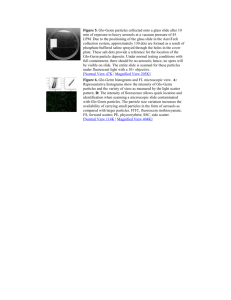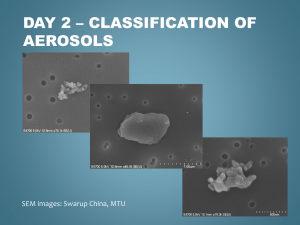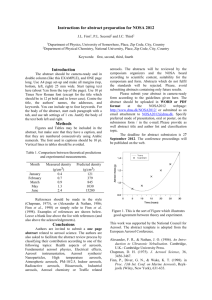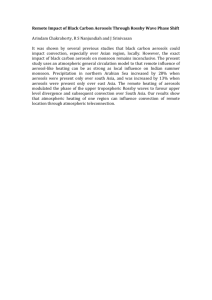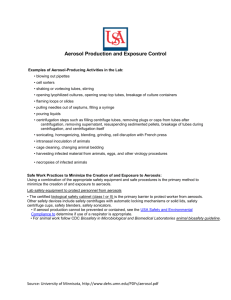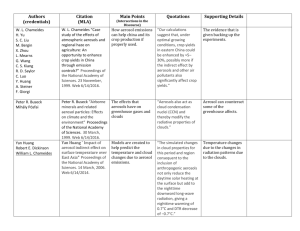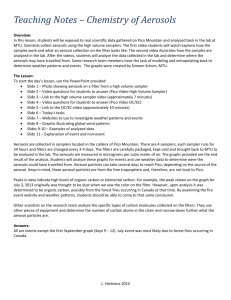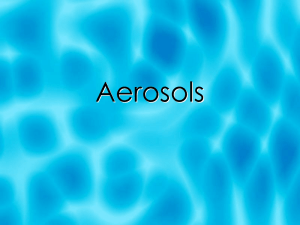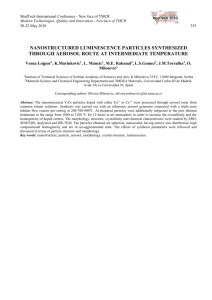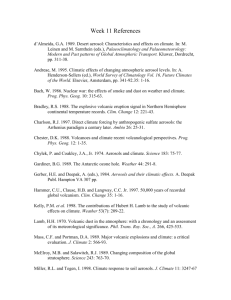Aerosols boardgame
advertisement
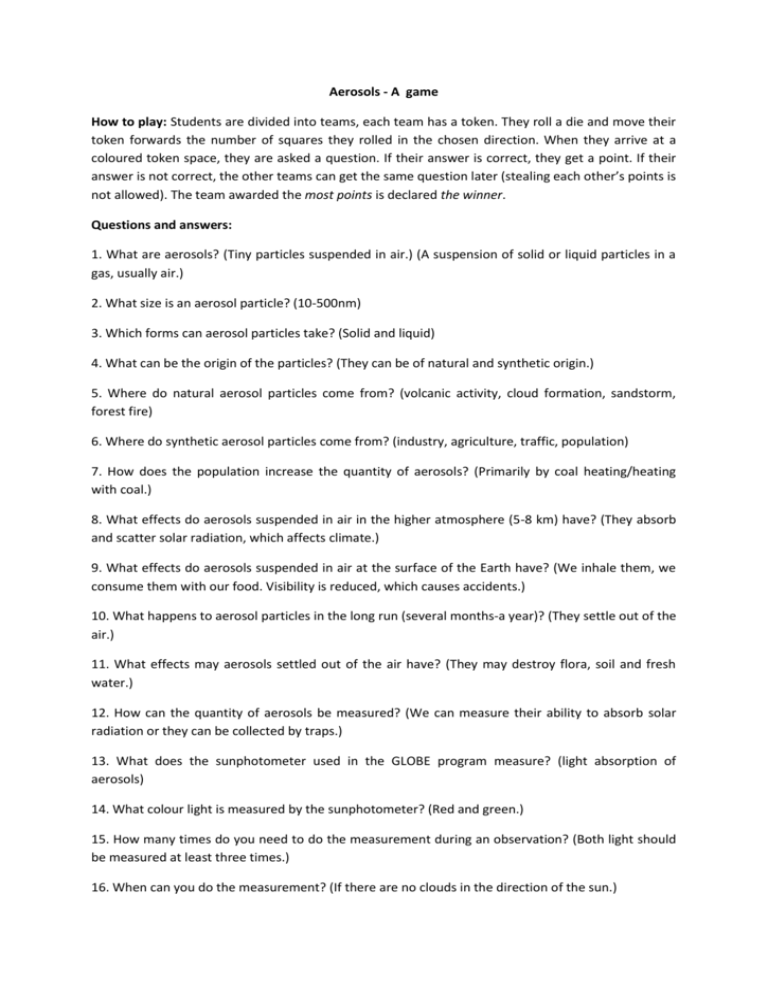
Aerosols - A game How to play: Students are divided into teams, each team has a token. They roll a die and move their token forwards the number of squares they rolled in the chosen direction. When they arrive at a coloured token space, they are asked a question. If their answer is correct, they get a point. If their answer is not correct, the other teams can get the same question later (stealing each other’s points is not allowed). The team awarded the most points is declared the winner. Questions and answers: 1. What are aerosols? (Tiny particles suspended in air.) (A suspension of solid or liquid particles in a gas, usually air.) 2. What size is an aerosol particle? (10-500nm) 3. Which forms can aerosol particles take? (Solid and liquid) 4. What can be the origin of the particles? (They can be of natural and synthetic origin.) 5. Where do natural aerosol particles come from? (volcanic activity, cloud formation, sandstorm, forest fire) 6. Where do synthetic aerosol particles come from? (industry, agriculture, traffic, population) 7. How does the population increase the quantity of aerosols? (Primarily by coal heating/heating with coal.) 8. What effects do aerosols suspended in air in the higher atmosphere (5-8 km) have? (They absorb and scatter solar radiation, which affects climate.) 9. What effects do aerosols suspended in air at the surface of the Earth have? (We inhale them, we consume them with our food. Visibility is reduced, which causes accidents.) 10. What happens to aerosol particles in the long run (several months-a year)? (They settle out of the air.) 11. What effects may aerosols settled out of the air have? (They may destroy flora, soil and fresh water.) 12. How can the quantity of aerosols be measured? (We can measure their ability to absorb solar radiation or they can be collected by traps.) 13. What does the sunphotometer used in the GLOBE program measure? (light absorption of aerosols) 14. What colour light is measured by the sunphotometer? (Red and green.) 15. How many times do you need to do the measurement during an observation? (Both light should be measured at least three times.) 16. When can you do the measurement? (If there are no clouds in the direction of the sun.) 17. How can you check whether the measurement was done correctly? (You have to compare your results with satellite data.) 18. Which satellites do measurements like this one? (AURA, TERRA, AQUA) The board:
